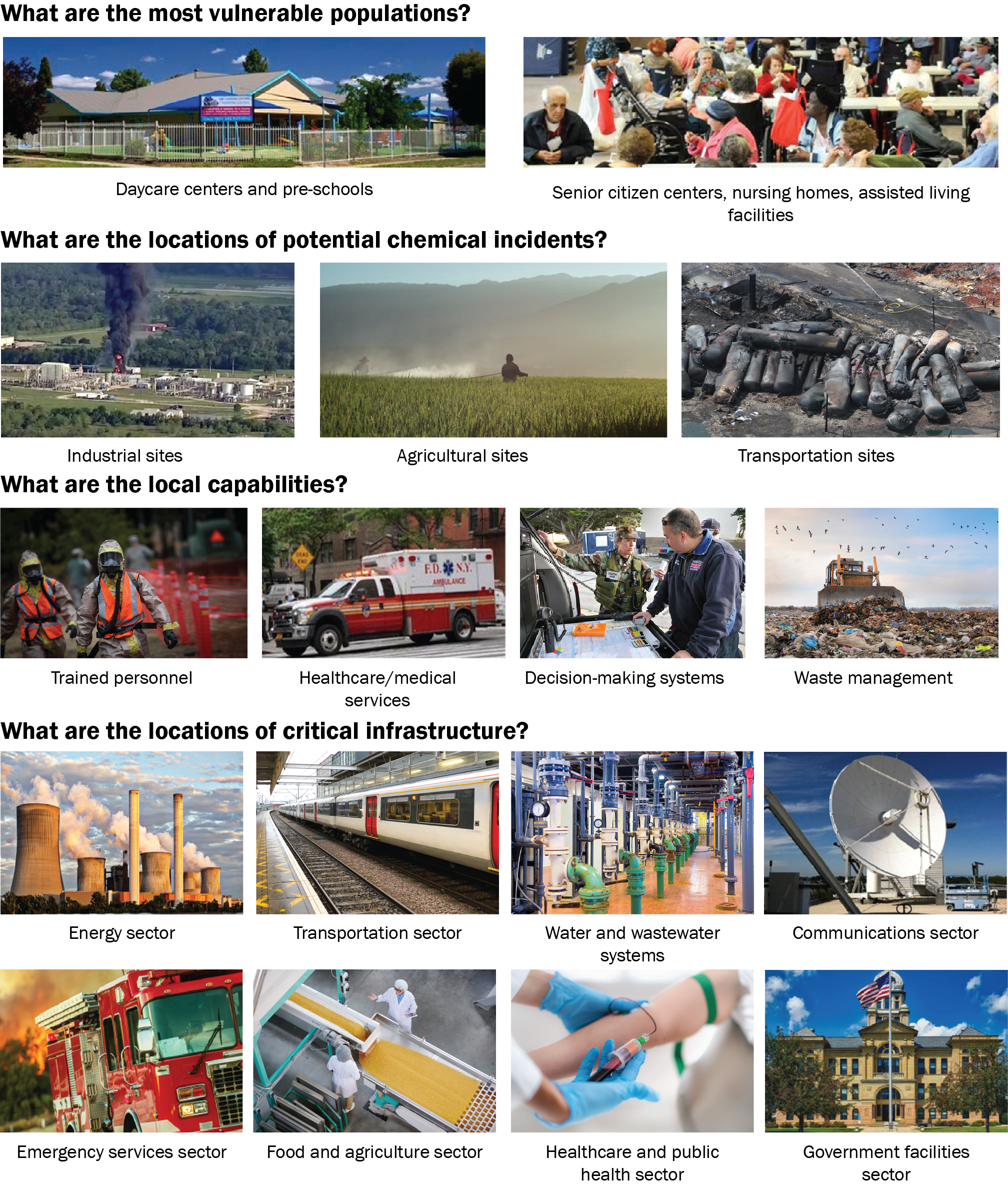Without repeated training and exercises, a coordinated and swift response, even utilizing a well-planned CONOPs, is unlikely to be successful. Promote community and responder readiness by developing chemical incident-specific training materials, executing chemical incident-specific training exercises, and distributing chemical incident-specific response guides, for example:
- Training programs to educate first responders on toxidromes associated with top threats
- Exercising decision-making under stressful conditions and with incomplete information
- Work aids, decision trees, and checklists for wide distribution, because high-consequence chemical incidents are infrequent
- Testing and exercising different messaging and communications formats and strategies
- Training for first responders and educational programs for the community on how to evacuate or shelter-in-place
- Training for first responders on supporting individuals with disabilities during response activities
- Advanced life support training for HazMat personnel, and HazMat training for first responders such as EMS and law enforcement personnel
- Training for personnel to Chemical Technician-level, OSHA 1910.120, Hazardous Waste Operations and Emergency Response (HAZWOPER) standards
- Expanded capabilities for the regional HazMat team, including the linking of practice and technology solutions to encourage early event recognition




